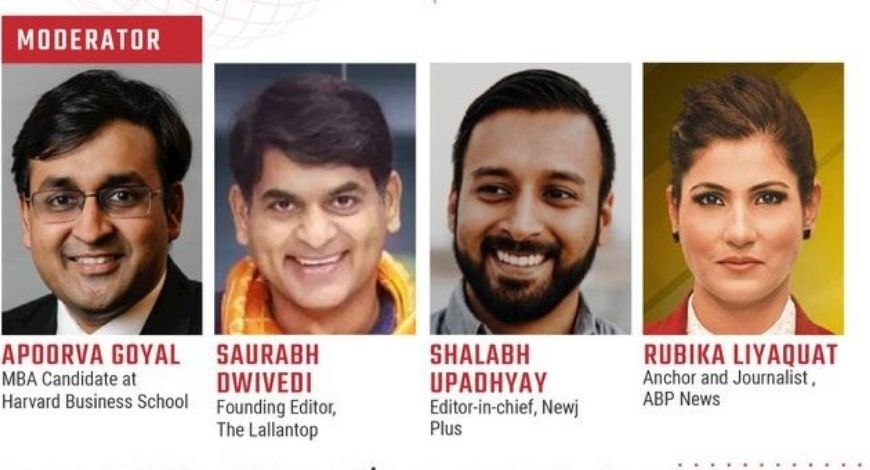Over 18 years, The Harvard India Conference has pondered India’s path to global leadership by inviting leading professionals and experts from a multitude of disciplines and industries. Shalabh Upadhyay, Founder & CEO, NEWJ (New Emerging World of Journalism) joined famed TV anchor from ABP News- Rubika Liyaquat and the Founding Editor of The Lallantop- Saurabh Dwivedi for a panel discussion on the third day of The Harvard-India Conference (Feb 19-21, 2021), one of the largest student-run conferences focusing on India in the USA.
In a unique and welcome turn, the Harvard India Conference hosted a Hindi language panel on the final day of the conference, focused on an imminently relevant topic-“Hindi News goes Digital: Changing Contours of News in Indiaâ€, and was moderated by Apoorva Goyal, a MBA candidate at Harvard Business School. In light of the record spike in consumption of Hindi news content owing to the COVID-19 pandemic, the panel came together to reflect on the strategies of both native and traditional media outlets as they attempt to thrive in a growing digital first media ecosystem.
The panel spoke about how the digital and social media space has been dispelling preconceived notions of what appeals to audiences, allowing room for divergent content, and experimental ways of communicating with people at large. Shalabh, poised right in the topical centre of the debate as the founder of regional-first content aggregator and publisher, NEWJ- highlighted how new media defied the “one way†communication often held by traditional media, allowing for consumers to be as vocal as creators, or deliverers of news. He stated how iterative the digital medium really is, allowing content platforms to innovate alongside their audiences. He cited an anecdote about how a video published on NEWJ focusing on the life of Subhash Chandra Bose was most well received in Tamil Nadu, rather than in North India and West Bengal where it was expected to. Weighing in on fake news and misinformation, the panel conveyed that the responsibility lay on both English and Hindi journalists to not only dispel untruths, but sift through misinformation. However, Shalabh offered a contrarian stance- about how the very existence of fake news is actually just a result of a robust information economy. As information leaves the newsroom and becomes diverse- fake news is just a label for what cannot be verified in a jiffy, but what may still hold truth, upon examination.
When it came to the nature of news media in India, the panel agreed that labels of allegiance for channels and journalists (such as the common parlance of “sanghi†or “libtardâ€) were an obsolete concept in a country like India, where facts thrive in multiple narratives and grey areas, on account of its great diversity.
Finally, each panel member maintained that both traditional and new media have charted their own areas of success, in which they continue to grow, but the import of digital content, virality of information and access to information has been revolutionized and democratized by social media. When it comes to the protection of the integrity of information and the editorial process in the case of new media enterprises, Shalabh emphasized on value creation as the core consideration- and how each shareholder, investor, advertiser must ultimately believe in the value of storytelling and changing lives through powerful narratives.




